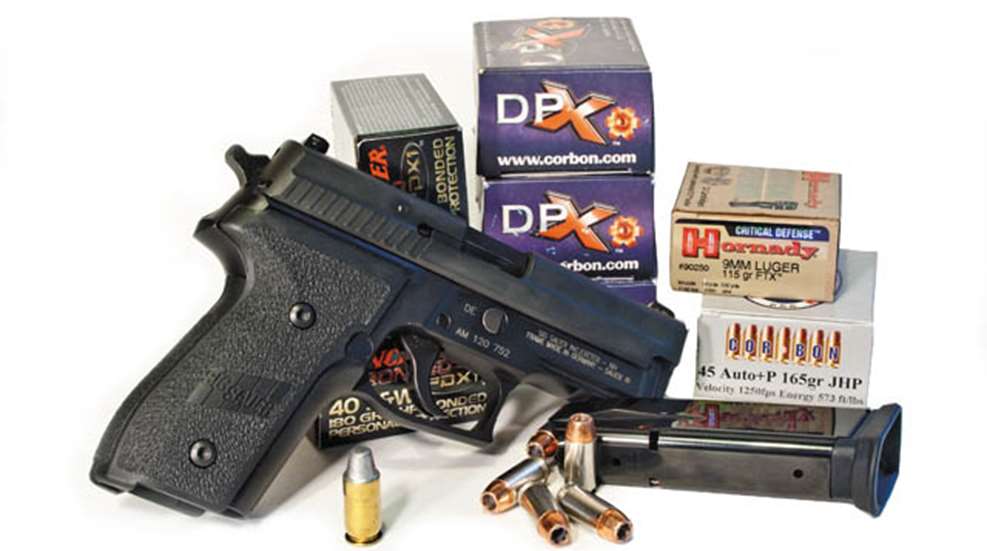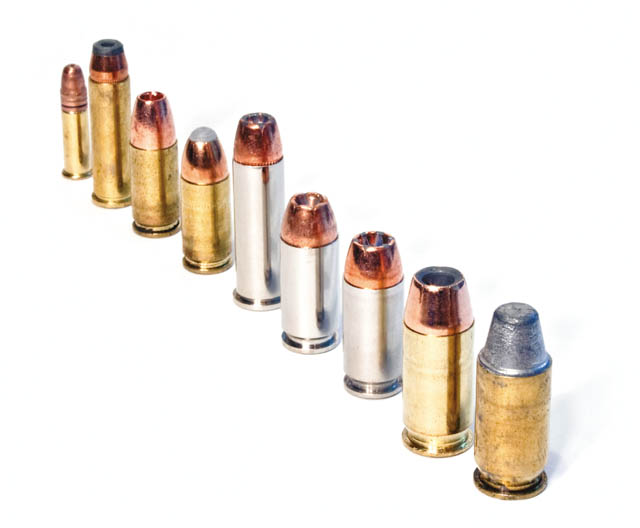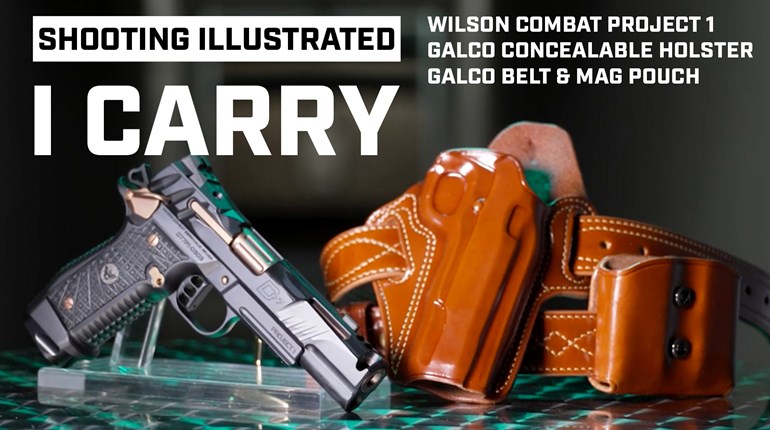
Here are several of my favorites, but my preference doesn't make them special or best. You can, however, rest assured I've conducted enough terminal performance testing to be confident in my choices. Some may go against long-standing "stopping power" assumptions, but that doesn't bother me. When you accept the fact that stopping power is nothing more than a deep, wide hole, most importantly punched in the right spot, it won't bother you, either..22 LR
There are obviously better choices than a .22 LR for self-defense, but that doesn't mean it's not used to fill that purpose for some, either by design or necessity. CCI's Velocitor load launches a 40-grain bullet at about 1,100 fps from most handguns and while you'll likely see little expansion, that's OK, what you want this little bullet to do is penetrate. Velocitors also generally feed, extract and eject reliably in most handguns.
.32 H&R Mag.
This is a controversial self-defense cartridge, but one that makes sense for recoil-sensitive shooters. Federal and Black Hills load the 85-grain Hornady XTP bullet, but from a short-barrel revolver it struggles to expand much at all. I don't buy into the notion that handloaded ammunition is a no-no in a defensive firearm, so my choice is the 90-grain Sierra SJHP and 6.5 grains of Ramshot's True Blue powder. This load will generate almost 1,100 fps out of most snub-nose revolvers and it creates wound cavities larger than the factory loads.
9 mm
For those who understand carrying a 9 mm is not a sin, the choice of what bullet weight to rely on is all that remains. Common defensive loads use 115-, 124- and 147-grain bullets. My testing shows 115-grain bullets generally offer the best balance of penetration and tissue destruction with conventional ammunition. The magazine of my CZ 75 is packed with the more than 1,200 fps, 115-grain DPX load from Cor-Bon. The Glaser, 100-grain +P Pow'RBall load is another favorite and its FMJ profile makes it very reliable. After testing the 115-grain Critical Defense load from Hornady, I believe it shows promise, too. The 9 mm brings high velocity and low recoil to the defensive-handgun platform. This advantage is best exploited with the lighter bullet loads.

.38 Spl.
The only .38 Spl. I own is a Smith & Wesson Chiefs Special. It has a 1 7⁄8-inch barrel and I've found many .38 Spl. loads do not produce enough velocity to ensure reliable expansion from this snubby. That's why I carry Speer's Short Barrel, Personal Protection 135-grain Gold Dot load. Hornady's new Critical Defense standard and +P .38 Spl. loads appear to be just as effective.
.40 S&W
I was never sold on the .40 S&W as the answer everyone claimed it to be. It bridges the gap between the 9 mm and the .45 ACP, but that does not mean it's better than either. Regardless, many police departments adopted the .40 S&W and it was the issue chambering of both agencies I worked for. The trend with law enforcement seems to be the selection of bonded 180-grain bullets. I have a .40 S&W SIG Sauer P229 and it's either loaded with Winchester's new 180-grain Bonded PDX1 or 180-grain Speer Gold Dot. Both feed reliably and perform very well when subjected to the FBI's bullet-testing protocol.
.45 ACP
With the .45 ACP you have to decide whether you want heavy and slow, light and fast or something in the middle. There is no wrong answer. The standard has long been a 230-grain hollow point at just less than 900 fps. On the other end of the spectrum are the screaming, lightweight bullets stepping along as much as 40-percent faster. Then there are what I call the compromise loads—those with 180- and 200-grain bullets.
I've tested more .45 ACP loads than any other and have settled on Cor-Bon's 165-grain +P load, which has a muzzle velocity of 1,264 fps out of my 5-inch Gaboon 1911. It creates massive wound cavities and, because it only retains about half its weight, the bullet will not over-penetrate. The special, wide-mouth, 165-grain Sierra hollow point used by Cor-Bon may not feed perfectly in all handguns. One that has fed reliably in every .45 I've used for testing is Federal's 165-grain EFMJ. For a heavier bullet, I like the 200-grain +P or 230-grain standard-velocity Gold Dot, which has an excellent track record on the street.
I have to mention another .45 ACP load. Joe Bonar was an exceptional 1911 smith and the man who taught me to really shoot a handgun. Bonar's favorite practice load was a hard-cast, 200-grain, semi-wadcutter ahead of 4.5 grains of Hodgdon Clays. Typical of him, it was over maximum. So, go with 4.3 grains, like the Hodgdon manual says. If I had a penny for every one of these I've shot I would be on Tahiti Beach in Saint Tropez, with little time to write about guns or ammunition.




































